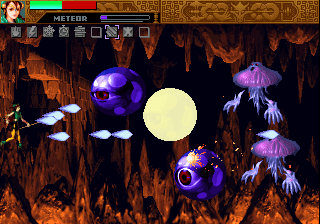

It’s the shooting, though, that’s the most interesting. It’s not the best melee system we’ve ever grappled with. All you can do is perform figure-eight movements around the arena, firing as you go, hoping they fall off.

The melee combat isn’t complete enough to offer blocks, dashes or parries, so you can’t stay and fight, for risk of having your life points lopped off. These barnacle enemies are an utter pain, and it’s sometimes hard to know what Psikyo wants you to do. It takes a while to switch between the two, and that delay in a game of this type is critical.Įqually, Sol Divide shoves melee enemies down your gullet, locking them to your character so that they follow you round the screen. For one, Sol Divide lacks anything approximating flow, as it won’t let you fire and fight at the same time. At least not in the way you hope it would. You can tap B to unsheathe your sword or spear and start jabbing enemies in the throat. Its foundations are as a horizontal shooter, as you auto-fire at enemies, so that is the same, but then Sol Divide layers on some hand-to-hand combat. It’s the only one of the Psikyo re-releases that does. And then, oddly, fighting their general as the last battle of the game.Ĭombat eschews the Psikyo template completely.

Largely, you are moving from ravaged city to ravaged city on tracks, chasing the warlock and finally facing them. But this is the sole choice of the game, moved to the opening moments. There’s a point at the start of the game where it looks like the story might skirt Game of Thrones-esque levels of world-building and political intrigue, as you are given a branching choice to petition for reinforcements or attack the enemy forces head-on.


 0 kommentar(er)
0 kommentar(er)
